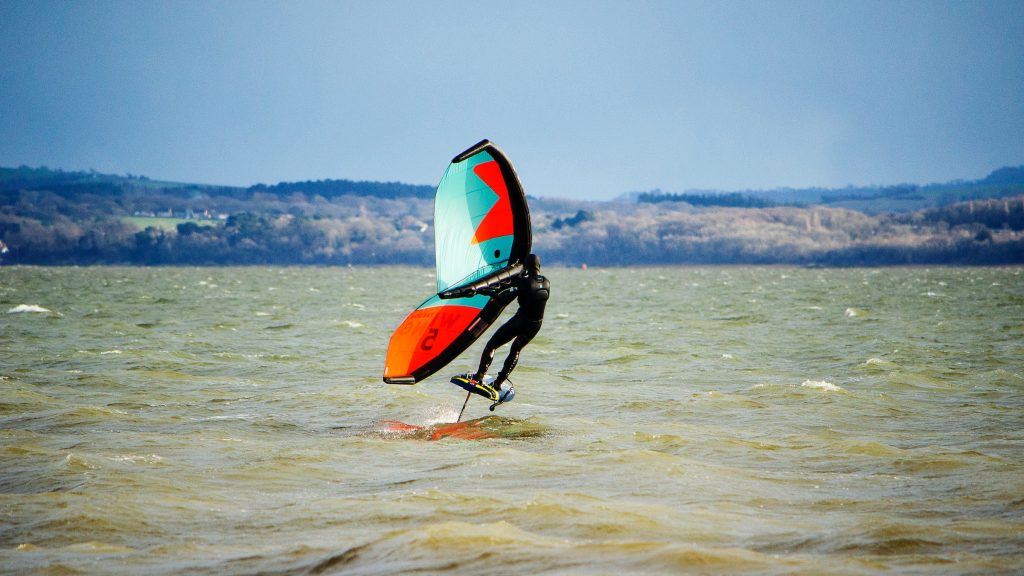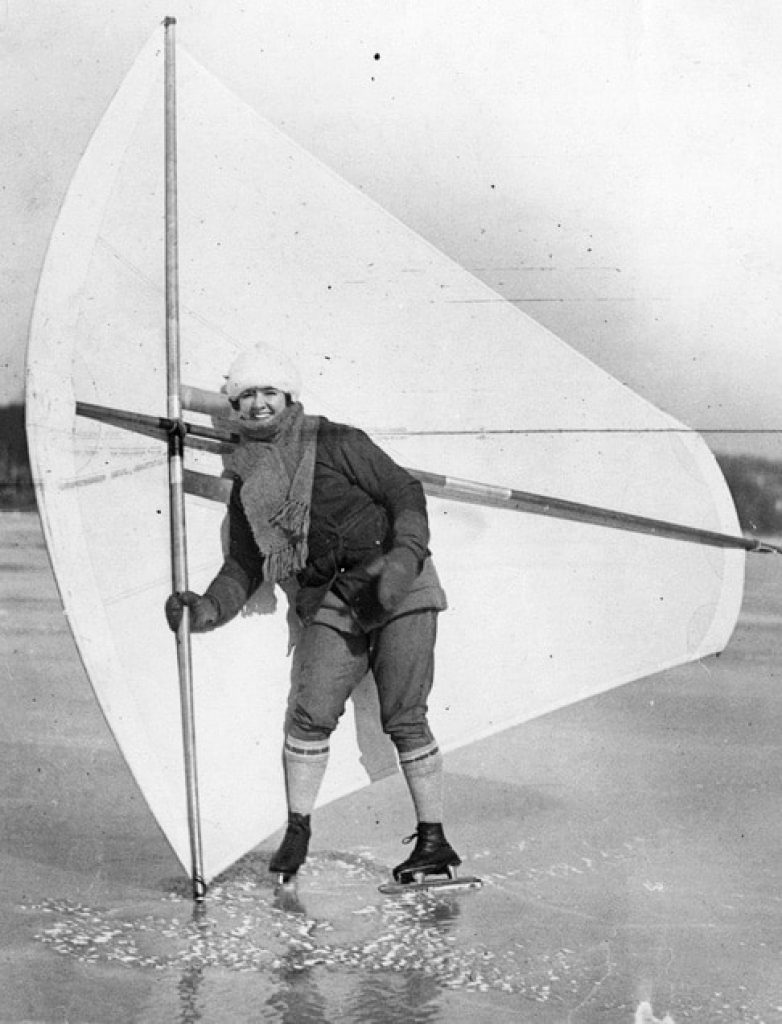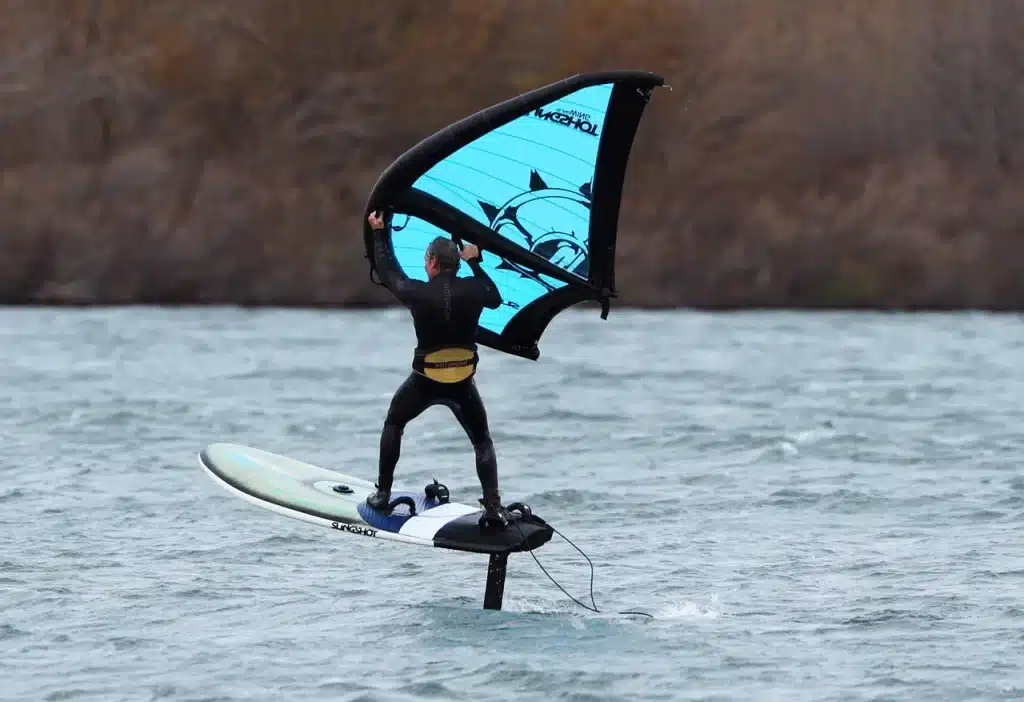Wing foiling, Wingfoiling, Winging, Wing surfing are all names used for a single wind propelled extreme water sport. Crazy right!?! Wingfoiling blends elements of surfing, windsurfing, kitesurfing and foiling into an amazing gliding sensation that many describe as ultimate freedom and peace.

Which gear do I need to start wing foiling?
Riders or Wingers are standing on a board fitted with a hydrofoil while holding the wing with their hands.
How does wing foiling work?
Wing is basically a sail. Wind blowing across it creates the force that propels the winger and subsequently the board together with the hydrofoil beneath it through the water. Once winger manages to generate enough speed a hydrofoil (basically an underwater airplane) lift force will raise both the board and the winger above the water surface.
Wingfoiling was a long time in the making until it hit the spotlight in 2019 and became the ultimate wind craze it is these days. So, what is wingfoiling and how it came to life? Why so many names? Who invented it? These are all the questions we will try to answer in this post.
Who invented wing foiling? When was wing foiling invented?
From prehistory to nowadays people have used some sort of sail to travel or have fun. Check out skate sailing which many Scandinavians, Dutch, Canadians and Americans have been practising since late 1800’s!

Smart as we are, humans came to the conclusion that those sails work on the same principles as wings, which in return made another human fascination possible – flight.

As we can see, the idea of a handheld wing is not something that is new or modern, we have only recently started using it in a new manner.
Windsurfing roots
During 1970’s and 1980’s windsurfing was booming so it is no coincidence that multiple wing sails appeared almost simultaneously. In 1981 two designs were patented:
Bird sail by Roland Le Bail who used it everywhere from the water with surfboard, over the land with rollerblades and on to the snow with skis as can be seen in this amazing video:
It didn’t gain major traction apart from resurrecting as a skate sailing specific wing some years later.
That same year a patent application by father of windsurfing Jim Drake based on the idea from his partner Ulrich Stanciu was filed for the Wing Rig. According to Stanciu, Jim Drake took one of the two prototypes – the yellow sail to California and later, at the end of January 1982, to the PanAm Cup in Kailua, where Pete Cabrinha, Richard Whyte, and Randy Naish tried out the “Wing.”

In 1984 Tom Magruder and Robert Crowell developed and later patented the Wind Weapon, a wing attached to a mast which is often incorrectly referred to as the first wing. Probably because it is the one having most recordings and was extensively used by inventors in years following its creation at Columbia River Gorge, a well known US windsurf spot.
It is assumed that due to complicated rigid construction of those early wings, as well as the sheer size needed to surf in lighter winds, wing surfing as we knew it in 1980’s never stood a chance against in many ways more refined and simpler windsurfing rig.
Kiteboarding roots
At the same the modern history of kiteboarding started taking roots thanks to two French brothers – Dominique and Bruno Legaignoux who patented the first first floating systems on a traction wing i.e. inflatable leading edge, in 1985. Brothers decided to launch their own company in 1995 under the name of Wipika. But it was only in 1999 when the real revolution began, as reported by Surfer Today, when paragliding and windsurfing companies such as Naish Sails, Advance, Challenger, Mosquito and Peter Lynn acquired licences from Legaignoux brothers.

Fast forward to 2011 where both Slingshot’s Co-Founder, Tony Logosz, and Duotone’s Ken Winner ideated and built wing prototypes based off existing inflatable kite technologies but shelved them because the board drag didn’t allow for user friendly upwind capabilities.
Foiling roots
Parallel to wing and kite developments, hydrofoiling has been ideated in windsurfing since the mid 1980’s as this Harken video shows.
But it’s the hydrofil advancements made from 2014 to 2020 which basically wiped off board drag from the equation and opened a completely new, previously unsurfable, wind window for windsurfers and kitesurfers worldwide. These advancements spurred a new leg of gear developments targeting light wind foil riding in particular.
Going mainstream
During 2015, Slingshot’s Tony Logosz was testing the Slingwing prototype, this time flying it with a hydrofoil below his board just before hydrofoil mainstream adoption. But again no product was launched.

As it usually happens in history, it actually wasn’t inflatable wing that pushed wingfoiling over the tipping point. Those were two homemade rigid frame wings built from old Naish kite leftovers, by legendary surfing and kitesurfing OG Marcus Flash Austin. Featured in YouTube videos dated March 26th 2018, and April 16th 2018. Videos show Flash cruising back and forth using those wings coupled with his SUP foil board off Maui’s shore.
These two videos were a starter gun shot in what became a race for first to market wingfoiling gear among all major brands. Duotone’s Ken Winner openly admits that it all clicked for him after seeing Flash Austin having fun with his homemade wing.
As the Kiteboarder magazine reported at that time: “When photos of a Duotone-branded inflatable wing surfaced on Facebook in the spring of 2019, the social media conversations and kiteforum.com discussion threads began heated debates about the purpose, utility and reach of the new equipment. With the veil on the Duotone product lifted, a number of other brands began releasing info on their previously under wraps inflatable wing campaigns. Slingshot had their version, Naish had a fully branded product almost ready to go, and F-One and Ozone each had non-logo’d prototypes in the works. The early videos of Sky, Robby Naish and Slingshot riders featured larger volume foilboards ranging from 90-110 liters with sufficient float to allow awkward waterstarts from the riders’ knees. Amidst the forum frenzy, windsports product guru Robby Naish released a prescient info video that addressed all the head-scratching questions, from basic waterstart technique to sizing.”
The Kiteboarder
Conclusion
We can conclude that wing foiling has been in development for almost 40 years, and it actually came to life once technological progress erased physical boundaries for it. Rigid, large, and heavy wings were replaced by light inflatable ones, whereas implementation of hydrofoil eliminated board drag. Furthermore, those advancements allowed for the use of smaller wings without diminishing fun or upwind capabilities. In our opinion Tony Logosz and Flash Austin fully deserve the title Fathers of Wingfoiling? Don’t you agree?
Is wing foiling the same as wing surfing?
Although both terms are often used interchangeably, technically speaking Wingsurfing is winging with a surfboard without the foil, and Wingfoiling is defined as using the wing to ride a foilboard.
Why is wingfoiling so popular?
Wingfoiling became so popular probably because its equipment is multiple times simpler compared to the most popular watersports (windsurfing and kiteboarding).
Complex sail rigging and rigid parts of windsurfing as well as +70ft (+20m) of kite lines have given way to simple inflatable handheld wings. Once such wings are coupled with light boards and highly efficient foils – any waist deep windy water surface becomes a potential playground. It’s no wonder it appeals to so many watersports novices.
